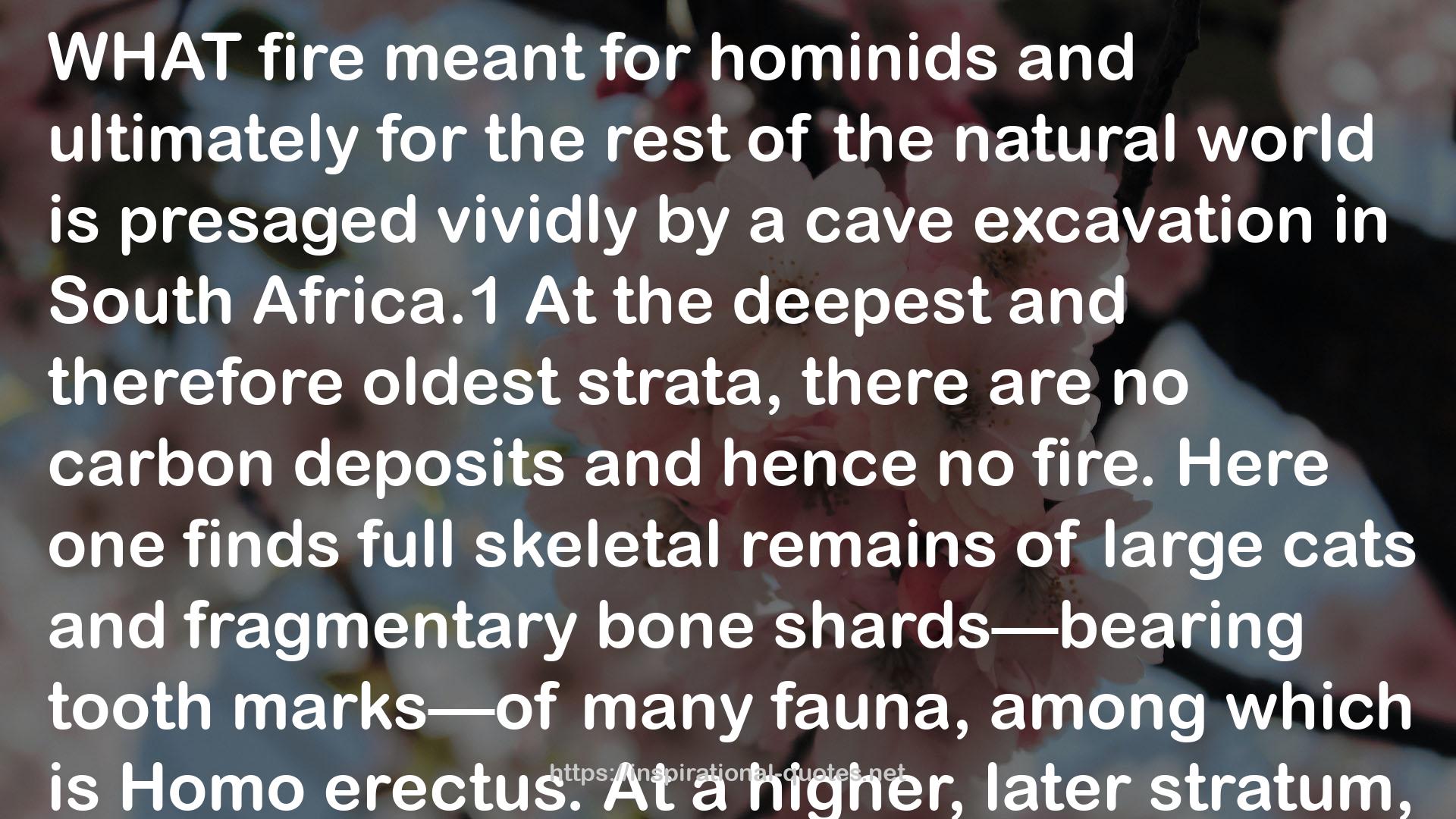" WHAT fire meant for hominids and ultimately for the rest of the natural world is presaged vividly by a cave excavation in South Africa.1 At the deepest and therefore oldest strata, there are no carbon deposits and hence no fire. Here one finds full skeletal remains of large cats and fragmentary bone shards—bearing tooth marks—of many fauna, among which is Homo erectus. At a higher, later stratum, one finds carbon deposits signifying fire. Here, there are full skeletal remains of Homo erectus and fragmentary bone shards of various mammals, reptiles, and birds, among which are a few gnawed bones of large cats. The change in cave “ownership” and the reversal in who was apparently eating whom testify eloquently to the power of fire for the species that first learned to use it. At the very least, fire provided warmth, light, and relative safety from nocturnal predators as well as a precursor to the domus or hearth. "
― James C. Scott , Against the Grain: A Deep History of the Earliest States
